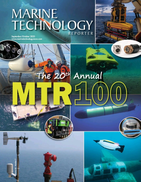NATO
Center for Maritime Research and Experimentation
World-class laboratory and research vessels enable highly qualified international staff of scientists and technicians to conduct critical research to learn about the maritime environment
At NATO’s world-class undersea research center, one can’t help but admire the more than 50 years of success. But the scientists, engineers and technicians at the Center for Maritime Research and Experimentation (CMRE) are focused on the future.
The NATO Undersea Research Center (NURC) became CMRE in July 2012. According to CMRE Director Dr. Dirk Tielbuerger, this represents an opportunity to apply the center’s knowledge and capabilities to the entire maritime domain. “This will better reflect our contributions to meet the needs of the 28-nation alliance, and to take full advantage of science and technology and our expertise in this domain.”
Much of what NURC accomplished during the Cold War took place in the shadowy undersea realm, addressing the challenge of anti-submarine warfare. Not surprisingly, much of that research and development was kept deliberately at a low profile.
That’s changing. CMRE is truly broadening its mission and capabilities. And the center wants you to know about it.
“Our Science & Technology (S&T) focus is to develop and then demonstrate how new concepts and equipment performs in the operational maritime environment,” said Tielbuerger.
More than ever, NATO is reaching out to other nations to promote its mission of peace, cooperation and interoperability; being able to work together and forming coalitions; and establishing an environment of security. All partners benefit from this sharing and collaboration. CMRE exemplifies this spirit of cooperation.
Not surprising, CMRE has world-class facilities available for researchers. CMRE operates the ultra-quiet research vessel Alliance, and the smaller coastal research vessel Leonardo, for the benefit of NATO and member nations. “We invite researchers to see how we can collaborate on oceanographic and maritime research that is best conducted aboard a highly capable and quiet dedicated research platform,” Tielbuerger said.
“Even when nations have the capability themselves, they gain a great deal from collaboration,” said Chief Scientist Ed Gough. “The NATO nations, through our work here, have been able to leverage the work of partners to take advantage of innovation, discoveries, inventions and knowledge around the world.”
“Science leads to technology that delivers capability,” Gough said. “And new technology allows us to do science new science, which creates a virtuous cycle.”
Smart Defense
NATO Secretary General Anders Fogh Rasmussen is promoting a new approach to defense spending in a time of economic crisis. It’s called “Smart Defense,” and it calls for nations to “pool and share capabilities, to set the right priorities, and to better coordinate our efforts...ensuring greater security, for less money, by working together with more flexibility.”
“It almost sounds as if we’re trying to piggyback on the smart defense paradigm, but the pooling and sharing concept seems ideally suited to what we do,” said Andy Pickup, the center’s deputy director and chief operating officer.
Pickup says CMRE has capital assets in place paid for by NATO so that someone who wants to use them doesn’t have to make that full investment. “If we get an arrangement where we can share the fixed costs amongst the group of nations, then our operating costs become lower than those around the world for a similar capacity. That gives nations the opportunity to come and conduct experiments, either individually or in collaboration with us and others using the assets which are being procured on their behalf or with their resources.”
In addition to using CMRE assets for future work, researchers can benefit from the vast amount of information that the center has produced to date. There are vast quantities of data which can be accessed at CMRE or sent across the net. “The archive, the valuable data that we’ve generated, is available. So in many cases, they can kick start their own science by just using these reference data sets that we’ve produced. And we publish them for use by others. These data sets are a gold mine for scientists and engineers working in the ocean.”
“The most valuable resource we have here, though, is the knowledge and the skills of the people,” Pickup said.
EKOE
One important CMRE effort is called EKOE, or environmental knowledge and operational effectiveness, which seeks to take that oceanographic, hydrographic and meteorological information and put it in the proper context for a particular operation.
“Different technologies are used for sensing the environment, using that information to create numerical models that allow us to extrapolate—both in time and space—what the forecast conditions are, and what the uncertainty of that forecast may be,” said John Osler, EKOE program manager.
“We want to be able to covertly collect environmental information without revealing our interest in a particular area. A ship is obvious and would reveal our interest, but autonomous vehicles can enter a ‘denied’ area where we don’t have free access but we anticipate the requirement to operate,” Osler said. “We recently used underwater gliders during the pre-deployment phase of a NATO fleet exercise to conduct the environmental characterization. That information was used in conjunction with a numerical model to provide the ocean forecast to the exercise participants. We had both military oceanography objectives as well as some fundamental science objectives, working with these new technologies and the ocean models.”
The staff members come from many different NATO nations, and bring a multi-disciplinary approach to challenges. “We don’t keep knowledge to ourselves, because NATO has a policy of rotating its scientists,” Pickup said. “Part of our challenge is not only exploiting the things that we’ve learned, but continuing to refresh that knowledge base.”
Additionally, visiting scholars and interns from a wide range of academic disciplines representing academia, government and industry bring their perspective and insights to problem-solving, a win-win proposition.
“We’re here to support the scientists,” said Alain Maguer, who heads up the engineering department. “Scientists want to develop new concepts, and using technologies that might not exist yet. So we try to translate what they are telling us into something that we could design and fabricate here, or we could buy. We integrate all the pieces together, and, very importantly, we test the system at sea. We have the sea at our doorstep, and we have two ships, the Alliance and the Leonardo. We see what is not working properly and we are able to modify as needed. And then we test again.”
The engineering department is 50 people, Maguer said. “We have or can build more or less all the equipment that we could dream of needing.”
Maguer said the people in the engineering laboratories can turn prototypes into operational concepts quite quickly. “We cannot make production versions of these items, but we can test prototypes in an operational environment.”
“We are a world class facility for calibration,” Maguer said. “We have an acoustic, oceanographic and optic calibration facility.”
“The beauty of this place is when you put the scientists together with the engineering capability. Our engineering component and the experimentation facilities make this one of the best places in the world in the maritime domain,” Maguer says.
While the scientists come and go, the engineering staff does not. “We have recently hired some new people, but some of our engineers and technicians have been here 30 years. What is important is that the team—even after all those years—are still very enthusiastic about going to sea,” Maguer said.
CMRE is in a unique position, says John Potter, project leader at CMRE. “It doesn’t have conflicts of interest with commercial companies. And it’s not a single nation. It has participation from 28 nations. It’s a multi-national environment. So it’s inherently cross-cultural, inclusive, open, and collaborative.”
“And it’s a one-stop shop,” said Rob Been, ASW program manager. “You have all the nations—28 of them; you have a ship; you have an engineering department that can make your hardware; and you have the scientists that can work both on software and on principles, on detection algorithms, on communications and networking stacks, and architectures. It covers the whole spectrum. That’s the power of the center.”
From a business standpoint, Pickup said there’s also a new emphasis on customers. “We’ve shifted this year to a system called Enterprise Project Management where all of the work is driven by projects. For customers to want to fund these projects, we must offer them something that they can’t do, or we can do better than others.”
Real Artificial Intelligence
CMRE draws on its legacy of knowledge, expertise and experience in the undersea environment. But the research has applications in all aspects of the maritime domain. CMRE is studying autonomous unmanned underwater systems to find enemy submarines and neutralize underwater mines, requiring multidisciplinary approaches involving autonomy, artificial intelligence, and system interaction and collaboration.
“The systems today are limited to human-guided systems or systems that execute preplanned missions. Human operators must intervene to observe events, make decisions and guide the vehicle,” said Warren Fox, program manager for the overall autonomous naval mine countermeasures program at CMRE. “They are very operator-intensive. “
“We’re looking at a more automated robotic solution. We’re trying to eliminate tethers, and allow multiple vehicles to communicate with each other and work together while people are kept at a safe distance from potentially mined areas,” said Fox.
These systems must have the ability to learn about their surroundings, and be able to think.
“One of the big limitations on sensing the environment, which is the intelligence you need on which to make a decision for intervention, is dependent on how big an aperture you have. And that used to mean a physical aperture towed by a big ship, which could be kilometers long,” said Potter. “Now, with lots of autonomous vehicles, you have an option for creating an aperture out of discrete elements that could also be kilometers along or across.
AUVs are smaller and cheaper than ships, allowing us to develop new intelligent-adaptive ways of gathering environmental data, forming a big-picture of what is going on and responding to it.
But that comes with some very significant challenges. Now that the technology of autonomous vehicles and robots is relatively mature, the challenge has really shifted toward their intelligent behavior. It’s one thing to make a system autonomous. It’s quite another to make it intelligent.”
“Communication in that realm of the world is very difficult and prone to frequent disruption,” said Been. “It’s complex and dynamic due to the sheer physics of the problem. That means that the bandwidth is quite low for communications. And so, locally, these systems have to be intelligent. They have to know what to do.”
“How do you have a collection of autonomous, intelligent assets control themselves as a team to produce more than the sum of the parts? That’s not a solved problem,” said Potter.
A recent experiment that exemplifies this multi-disciplinary approach sounds like a sci-fi scenario. “To say ’We’ve got all these autonomous underwater robots, and they can listen for and detect submarines, and cooperate with each other to hunt the submarines down,’ sounds very Matrix-like. It’s a very sci-fi kind of vision. And, indeed, it’s a big leap forward to devolve the intelligent actions of hunting a submarine down to an automated system—it’s a huge step in machine intelligence.”
“We have just now reached the point where all the pieces have been tested and we’re actually putting the whole thing together and having a couple of vehicles in the water in a very realistic scenario where they will do exactly what I just described,” says Potter.
Operational S&T
“Our charter is to organize and execute an S&T program in the maritime environment. Which for me is made of two parts: the physical environment and its synthetic counterpart. You know when you’re in the physical maritime environment because it tastes like salt. You know when you are in the synthetic environment when you are looking at a screen. Both are important,” said Gough.
We have acoustic engineers, physicists, computer scientists and mathematicians all working to better understand the maritime environment and find solutions for maritime autonomous unmanned systems, underwater communications and maritime information,” said Gough. “It’s our job to help NATO operationalize that S&T in the maritime and turn it into what the commanders and decision-makers advantage. It opens up options for warfighters.”
“We don’t know enough about the ocean to know what it will do next. We’re always working at the frontier,” Gough says. “When we’re at the frontier, we never really know what’s next.”
(As published in the November/December 2012 edition of Marine Technology Reporter - www.marinetechnologiesnews.com)
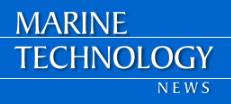

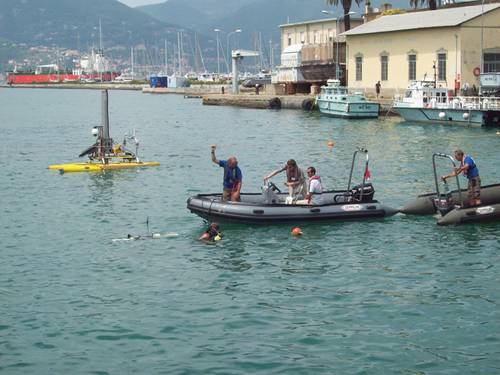
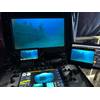

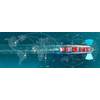
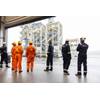
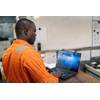
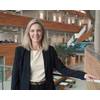






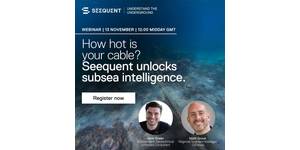
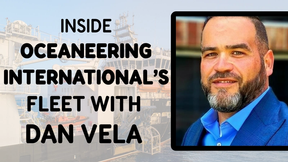
 August 2025
August 2025


